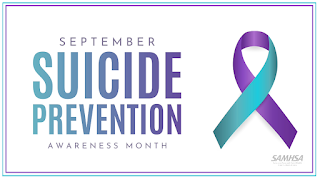Tips for Handling Problematic Behaviors Remotely
Congratulations! You’ve jumped in to the challenge of providing synchronous remote instruction this new school year. Navigating the new technology and this new way of teaching can be truly anxiety provoking. This is truly a “new normal” (Have I said “new” enough times?) You’ve faced technology issues completely out of your control such as NCEDCloud failures and Zoom outages. During those times when you have been able to provide synchronous instruction, hopefully your students have been attending and participating, and things have been going smoothly.
However, some of you may have already started experiencing some problematic behaviors from your students during synchronous instructional times. Maybe a student has used inappropriate language or gestures either in the chat or by unmuting themselves. Or you may have observed a student teasing another student either in the chat or video. Managing problem behaviors can be difficult and challenging when students are physically in class with you. However, managing problem behaviors during remote instruction can definitely pose a different challenge. Hopefully you have not experienced these concerns but if you have, PBISapps.org has provided this resource which provides suggestions for handling problem behaviors remotely.
They recommend the following 4 step plan to assist you in addressing student behaviors remotely.
Step 1: Take a Breath
The author states; “When misbehaviors happen in your virtual settings, the first step to responding is to take a breath. Collect yourself. Make sure your reaction is rooted in the student’s behavior and not your own stress. For me, I stop and take a beat. I notice my heart racing and an overall nervous feeling in my body. I take a deep breath and make sure the next words out of my mouth happen in a calm tone. Taking a few seconds to do this step sets you up for what comes next.”
Step 2: Reteach Expectations
The author noted; “Up until now, most students’ online interactions involved social media, gaming, and text messages with friends. Doing school online is new. Your expectations related to language and behavior are probably pretty different from how they’ve used online spaces before. Your students are familiar with your classroom expectations. Do they know your expectations for distance learning? …
Teaching expectations once won’t magically create a perfect classroom. Remember, distance learning is different for everyone and we’re all bound to mess up. When you see misbehaviors, particularly when those misbehaviors happen with lots of students, take the time to reteach the expectation. Remind folks about how you expect them to use the technology, what to do with their microphones when they enter a meeting, how to use the chat to enhance the lesson rather than distract from it, etc. Sometimes a reminder is all anyone needs for new expectations to stick.”
Step 3: Get Curious
The author reminds us that; “Remote locations carry the same types of motivations as their physical counterparts: To get or to avoid something. Before deciding to document the behavior with a referral, put the behavior in context.”
They note the value of developing a hypothesis or summary statement, which includes the antecedents (what occurs before the behavior), the behavior, and the maintaining consequences (what occurs after the behavior). They provided the following example and considerations:
“During [insert routine], when [insert trigger], the student [insert observable behavior] and as a result [insert consequence].
During our large class meeting, when I gave instructions to the class, Alan spammed the chat with cat memes and as a result other students reacted with emojis and photos of their own.
The sentence makes it a little more obvious - Alan’s cat memes get him tons of attention from his peers. With that small detail, the solutions you implement can target his motivation instead of work against it.
Beyond typical motivating factors, every student’s circumstance away from school is different. Food insecurity, internet access, familiarity with technology, support from adults at home, it all affects a student’s behavior in class.
• Is Bryan bored and looking for something interesting to do?
• Does Lydia need attention after being away from her friends?
• Is a slow internet connection making it difficult for someone to engage in the lesson?
When you notice misbehaviors, get curious why it’s happening. Maybe something a student did really warrants a referral. It’s also possible students need alternative support given their specific remote circumstances.”
Step 4: Document
The author recommends documenting minor and major problem behaviors. They note;
“In the end, some behaviors warrant documentation. With students out of your physical presence, you won’t likely see the same behaviors as a typical day in school. Disruption looks different. You won’t see students pushing each other on the playground or find too many dress code violations on Zoom…although I could be proven wrong. You might even see some behaviors every day that you never saw in your classroom.
Each problem behavior has a definition. What those behaviors look like in remote settings could be different. If you haven’t already, take the time to consider the misbehaviors you see right now. Talk with other teachers and your school-wide team.”
They also provided an example of one way to categorize behaviors documented; as well as various additional helpful links.
So this is definitely a “new normal”, (Had to say it one more time 😁). But remember, you know how to manage behaviors and did it all the time with students in your “brick and mortar” classroom. Hopefully these tips will provide beginning steps to help you carry those skills over, in order to manage student behaviors in your virtual classroom.



Comments
Post a Comment